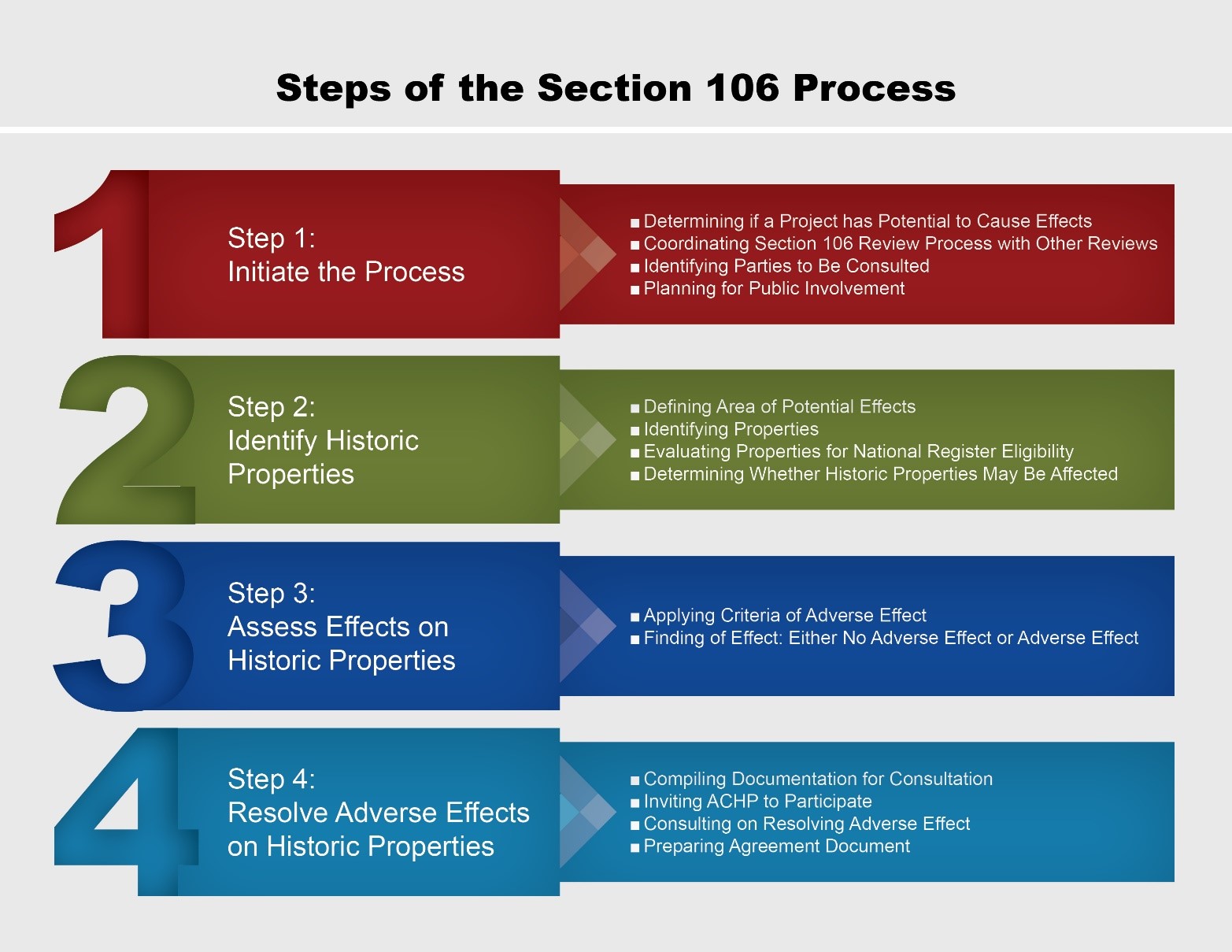Steps in the Section 106 Process
OBJECTIVES
This portion of the tutorial provides information on the four key steps in the Section 106 review process. It also examines how to address emergency situations and what to do when there is an unanticipated discovery after the completion of the Section 106 process. When you have finished, you should have a basic understanding of the following:
- The four key steps in the Section 106 review process
- FHWA’s role in each step in the process
- Who FHWA consults with during each step
- How FHWA carries out the Section 106 process during declared emergencies
- How FHWA addresses post-Section 106 review discoveries
OVERVIEW
The following are the four steps in the Section 106 review process:
- Initiating the Section 106 process
- Identifying historic properties
- Assessing if a project will have an adverse effect on historic properties
- Resolving any adverse effects on historic properties

The four steps in the Section 106 process, with key activities for each step. See full description here.
The following sections provide detailed information on each of these four steps, highlighting the points within the process where FHWA makes a formal Section 106 finding that either completes the Section 106 process or requires FHWA to move to the next step. The fourth and last step ends with the execution of an agreement document setting out the agreed upon measures to resolve any adverse effects on historic properties. Though Section 106 is completed with this fourth and last step, measures to resolve any adverse effects must be carried out as a commitment of the project.
A Post-Review Discovery of resources that may have historic significance or additional impacts to historic property not previously considered after the completion of the Section 106 process requires further coordination. This tutorial also discusses how Section 106 compliance is handled when there is a Federal- or State-declared emergency (emergency situations). See Post-Review Discovery and Emergency Situations in the Additional Information.
For questions or feedback on this subject matter content, please contact David Clarke.

